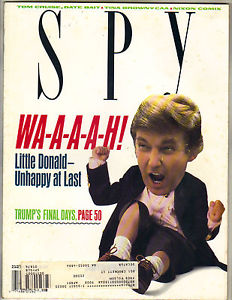If you watch my feed you might notice that I like Instagram...a lot. So, like many "igers,", I was pretty annoyed with Instagram's announcement that it would be replacing its chronological photo feed with an algorithm similar to the one used to dynamically display posts on Facebook. Or, plainly put, the change that made Facebook suck.
Being that Instagram is a Facebook subsidiary, I'm only surprised that it took this long for the Social Network to ruin the one social networking app I truly enjoy. I don't know why Facebook can't just leave a good product well enough alone.
Claiming that 70% of pictures go unseen, Instagram wants to address the gap. When the update is implemented, you'll see the pictures that Instagram thinks you want to see first: i.e. pictures with the most likes, a.k.a. Kim Kardashian's ass.
There are several flaws in this logic. Most glaringly, this frustrating algorithm hit Facebook hard. It didn't kill it, but it reset the social network's primary purpose. Remember when you could post, "anyone wanna grab lunch?," and then find a lunch buddy? Now, that post shows up in your friends' feeds two days later, or at midnight, and they wonder how high you are.
You can change your settings to see everyone's post in chronological order, but your own posts get buried beneath celebrities and political rants that get the most traction. Meanwhile, your warning about the pileup on I-95 gets lost and all your friends get stuck in traffic. Creating yet another in the network's endless settings poorly addressed the problem: the chronological newsfeed isn't just for your viewing pleasure, it also keeps all posts in sync. Facebook's role as a social network required a level of timeliness for it to work as a realtime network, timeliness that is now gone.
70% of Instagram's posts might be going unseen, but they're unseen by people who post to collect followers, people driving a business, and people who rarely look at their feeds. These are people who don't want to see 70% of the photos in their feed. This algorithm transformed Facebook from a useful social media message board into a scrolling feed of high profile accounts that might as well be sponsored content: ads.
If you think this is some product developer's quarterly "million dollar idea," you're probably right. That's how information technology companies operate. But this isn't simply an improvement to the product, not in the way Instagram would like you to believe. This is a marketing tool for the follow-whores that truly drive Instagram's ad sales: "Post often -> Get more likes -> Be seen more -> Gain followers." This is the kind of action that will turn Instagram into scrolling click bait, and advertisers love being tucked unassumingly into that mix.
But for most active users, Instagram is the anti-social social network. Rarely political and seldom annoying, those who look at Twitter and Facebook with squeamish anxiety can turn to Instagram and catch up on a feed full of flowers...or cats...or cars...or architecture. Its simplicity allows users to make it what they want, and as long as you look past the follow-for-follow kids and Russian webcam sluts, it's nothing but a dry photo album for people who like taking and looking at pictures. With a pocket full of social media screaming "LOOK AT ME!," Instagram is a cathartic reprieve that's perfect in its simplicity.
Considering the blowback, Instagram will probably add this as an optional setting, but don't expect it to go away. This is some business analysis team's quarterly baby and it's going to happen. If you're one of many Instagram users who enjoy looking at the photos from those you follow, you're going to have a hard time keeping up. Perhaps even worse, many who enjoy looking at your own pictures will be missing those you post that get buried under high-profile accounts.
This is about money. Considering Instagram is a free app, that's fine. Product enhancements should have a financial component when you're giving technology away. But that doesn't excuse soiling a good product for short-term profit. This change is solely about driving action on the app, discouraging thoughtfully artistic content in lieu of the shameless self-promotion that drives likes and comments, and sells ads.
App users are fickle and trends die fast. Remember FourSquare? Unless your app is a must-have - and I'll lump Facebook's invincibility right up there with cable and electricity - the user experience needs to be your top priority if you expect to survive. Some things are better left on the slow and steady, tried and true path that's proven to work, and rolling out new filters has worked for Instagram. It beat Twitter because it addressed an untapped market of reluctant social media users that don't Tweet.
If Instagram wants to drive revenue, then add a few more sponsored photos to the feed. If it's truly concerned about a 70% gap in viewership, then display the feed in a grid, the way a user's own feed is displayed, so you see nine to twelve at a time. But don't mess with a user experience that the vast majority of your users prefer. Unfortunately this seems like the trickle down result of Facebook's demand to squeeze more money from its products before relegating them to the archives of the internet next to FarmVille and Friendster.









